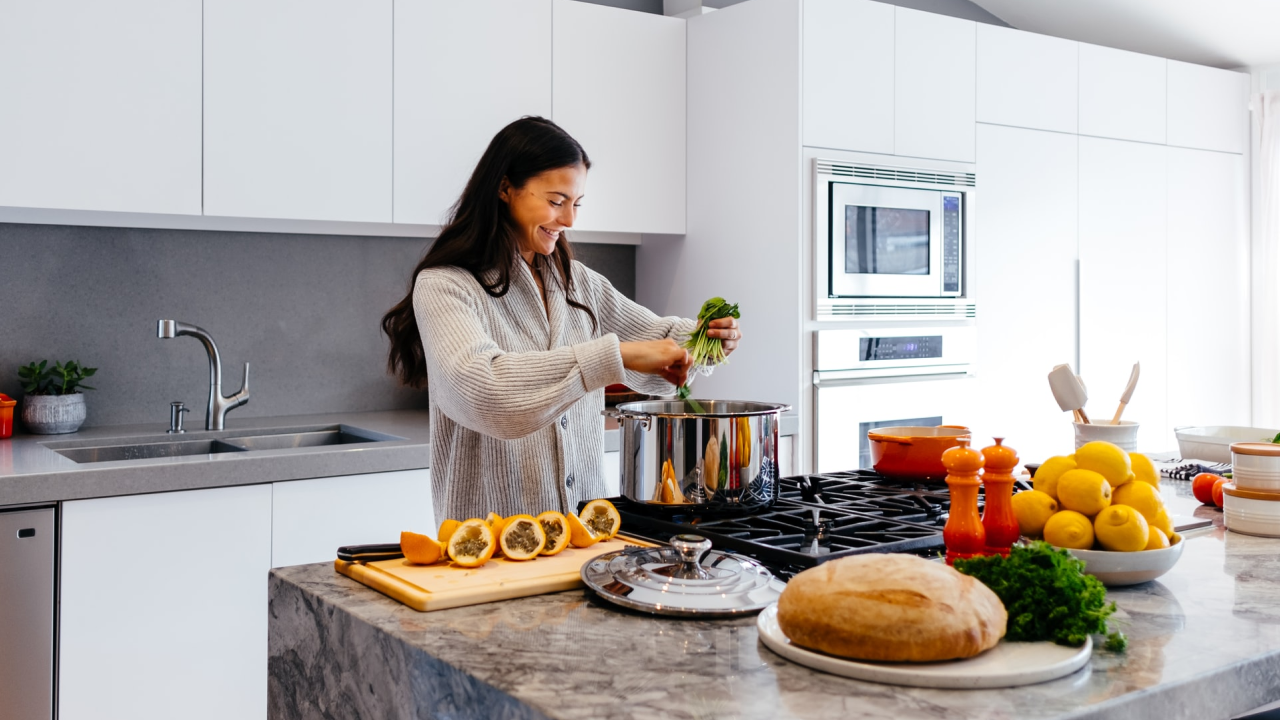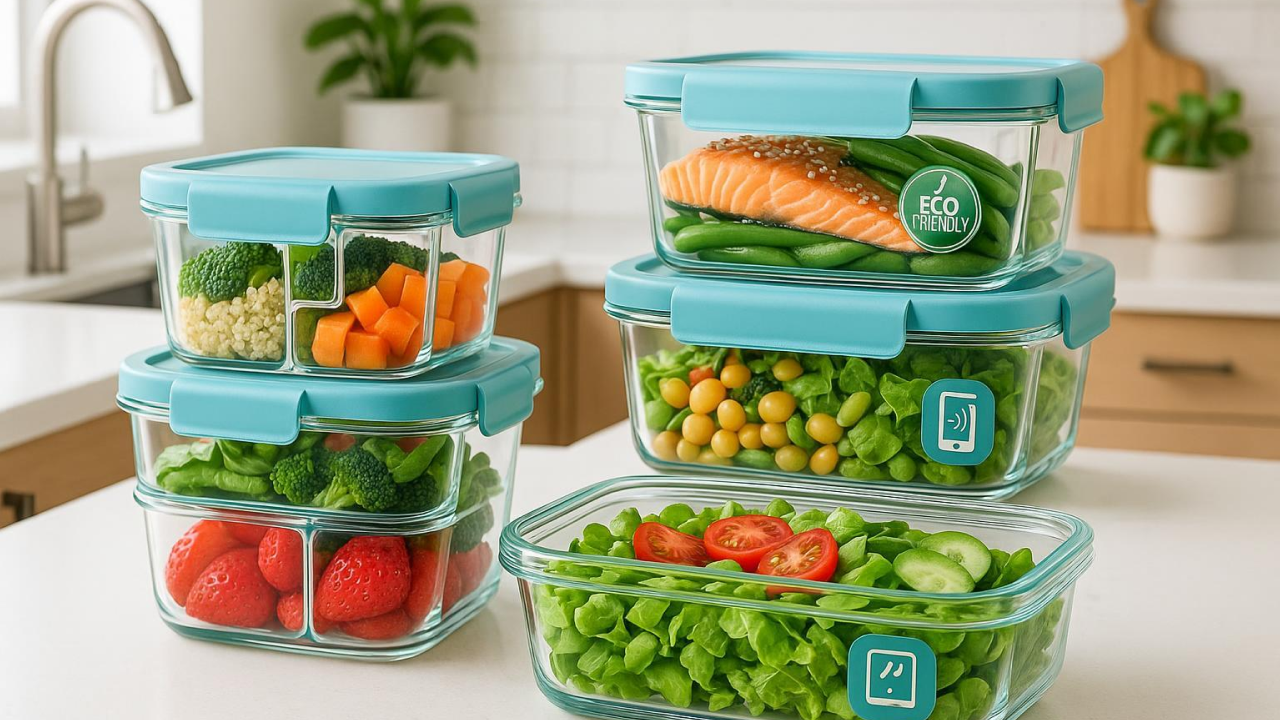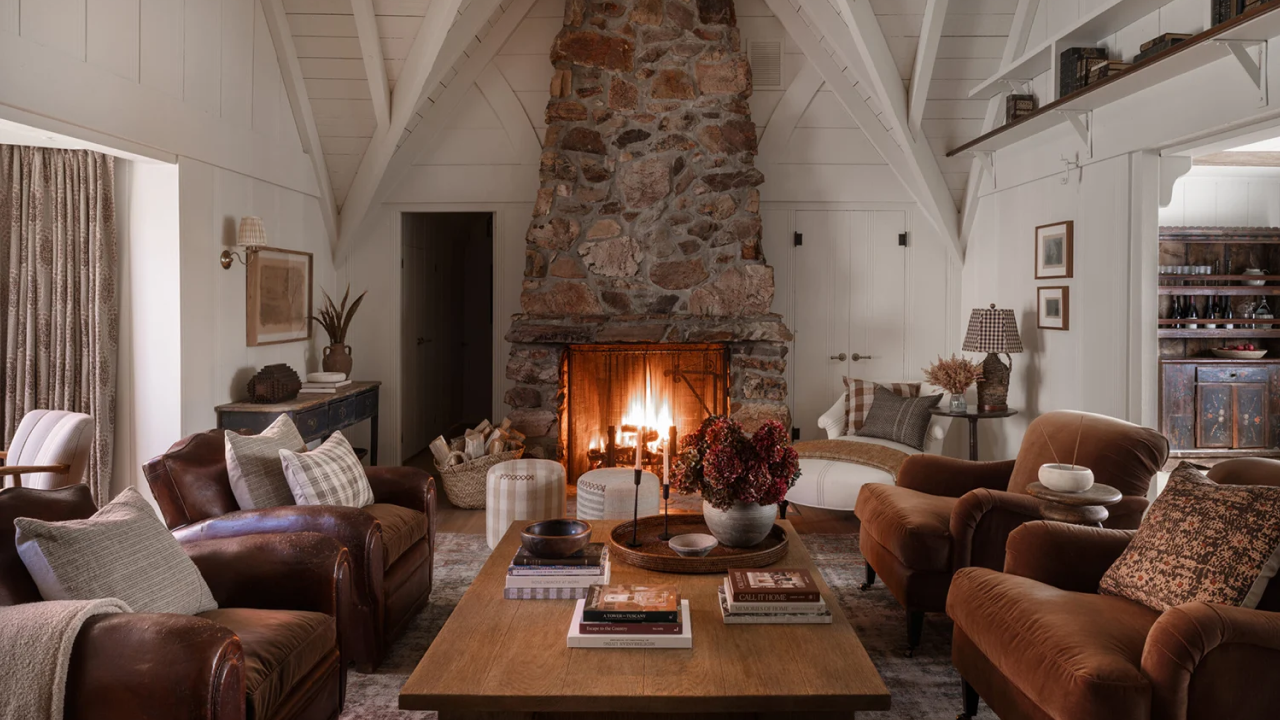Introduction
The kitchen is one of the most important rooms in your home. It is where you cook food, eat meals, and spend time with family. Having the right kitchen accessories can make cooking easier, faster, and more fun. But how do you choose the perfect accessories for your kitchen? This guide will help you pick the best kitchen accessories for your space. We will talk about what kitchen accessories are, why they are important, and how to choose them in simple steps.
What Are Kitchen Accessories?
Kitchen accessories are tools and items that help you cook, prepare food, and keep your kitchen organized. These can be small things like spoons, measuring cups, and knives, or bigger things like cutting boards, pots, and pans. Accessories also include things like storage containers, dish racks, and kitchen towels. They come in many shapes, sizes, and materials, each designed to make different kitchen tasks easier and more efficient. For example, a garlic press helps you crush garlic quickly without much effort, while a peeler makes it simple to remove the skin from vegetables and fruits. Some accessories are designed for specific cooking styles or dishes, such as pasta makers, rolling pins for baking, or spice racks to keep your herbs organized. Kitchen accessories are not just about cooking they also help with cleaning and storing food. Items like dish drying racks, trash bins, and food wraps keep your kitchen clean and organized. Having the right accessories means less mess, less time cleaning, and more time enjoying your meals. In short, kitchen accessories are essential helpers that support every step of cooking from preparation and cooking to serving and cleaning up. They improve your kitchen experience and help you become a better cook.
Why Are Kitchen Accessories Important?
Kitchen accessories make cooking easier and more fun. When you have the right tools, you can cook faster and more safely. For example, a good knife helps you cut vegetables quickly, and a measuring cup helps you add the right amount of ingredients. Without the right tools, cooking can be slow and hard, and you might get frustrated or make mistakes. Having the right accessories also improves the quality of your food. For example, using a whisk can help mix ingredients smoothly and add air to cakes, making them light and fluffy. Using a timer ensures your food is cooked just right, so it doesn’t burn or stay raw. These small tools make a big difference in how your meals turn out. Kitchen accessories also help keep your kitchen clean and organized. Things like storage boxes and racks keep your kitchen tidy and save space. This is very important if your kitchen is small because clutter can make it hard to work. When everything has its place, it’s easier to find what you need and clean up quickly after cooking. Accessories like dish racks, scrubbers, and cleaning cloths help you keep your kitchen hygienic and safe. Clean tools and a clean kitchen reduce the chance of germs spreading, which is very important for your health. In summary, kitchen accessories save time, improve cooking results, increase safety, and help keep your kitchen neat and healthy. They make cooking more enjoyable for both beginners and experienced cooks.
Step 1: Know Your Kitchen Space
Before buying any kitchen accessories, take a good look at your kitchen space. Think about how big or small your kitchen is. Is it a large, open area where you have lots of room to move around, or is it a small, cozy space with limited countertops and storage? Knowing this helps you choose accessories that fit well without making your kitchen feel crowded. Also, check how many cupboards, drawers, and shelves you have. If you have plenty of storage, you can buy more or bigger accessories. But if storage is tight, you should look for tools that are compact, foldable, or can be stacked to save space. Consider the layout of your kitchen too. Is it a separate room dedicated just for cooking, or is it part of the living or dining area? Open kitchens might benefit from accessories that are also stylish since they will be visible to guests. Don’t forget to think about your kitchen’s style and color scheme. Accessories come in many designs—modern, rustic, colorful, or simple. Picking tools and containers that match your kitchen’s look helps create a nice, coordinated space you’ll enjoy working in. Taking the time to understand your kitchen space ensures that your new accessories will not only be useful but will also fit comfortably and look great.
Step 2: Think About Your Cooking Habits
Everyone cooks in their own way. Some people like to cook simple meals every day, while others enjoy trying new and more complicated recipes. Some people cook often, while others only cook sometimes. Your cooking habits are important because they help you decide what kitchen accessories you really need. If you cook every day, it’s best to have tools that are strong, easy to use, and can handle regular use. For example, a good set of knives, sturdy pots and pans, and reliable mixing bowls will help you cook faster and with less effort. If you love baking, you’ll want special baking accessories like measuring spoons and cups for accuracy, mixing bowls of different sizes, spatulas for mixing and scraping, and maybe even a rolling pin. Baking requires more precise measurements, so these tools are very helpful. If you prefer quick meals or simple cooking, choose small, easy-to-clean tools that don’t take up much space. For example, a microwave-safe bowl, a small chopping board, or a fast electric mixer can save you time. To make sure you buy the right accessories, write down the dishes you cook most often. Do you mostly cook soups, pasta, or stir-fries? Do you bake cookies, cakes, or bread? Knowing this helps you pick tools that will be most useful for you.
Step 3: Choose Essential Kitchen Accessories
Every kitchen needs some basic accessories that make cooking easier and more efficient. A good set of knives is very important because they help you cut meat, vegetables, fruits, and bread safely and quickly. To start, having a chef’s knife, a paring knife, and a bread knife covers most cutting needs. A sturdy cutting board protects your countertop and keeps your knives sharp; wood or plastic boards are both good options. Measuring cups and spoons are essential, especially for baking, as they help you add the right amount of ingredients for the best results. Mixing bowls in different sizes are useful for mixing ingredients, marinating food, or serving. Spatulas and spoons help with mixing, scraping, stirring, and serving. You also need a few pots and pans for cooking different dishes, such as saucepans for boiling, frying pans for sautéing, and larger pots for soups or stews. Finally, airtight storage containers keep your food fresh and your kitchen organized by safely storing leftovers and preventing spoilage. Starting with these essential tools gives you a strong foundation to cook a variety of meals comfortably.
Step 4: Choose Accessories That Save Space
If you have a small kitchen, choosing space-saving accessories is very important. When space is limited, every inch counts, so it’s smart to pick tools that can do many jobs. For example, a measuring cup that also works as a mixing bowl can help you save space in your cupboards. Multi-purpose tools reduce the number of items you need to store. Stackable containers and bowls are another great way to save cupboard space. These containers fit neatly inside each other when not in use, making your kitchen look less cluttered and easier to organize. You can also find stackable pots and pans with lids that fit together nicely. Using racks and hooks on walls or inside cupboard doors is an excellent way to free up countertop and drawer space. Hanging pots, pans, and utensils keeps them within easy reach and prevents overcrowding in drawers. Magnetic strips on walls are also handy for knives or metal tools. Foldable or collapsible tools are perfect for small kitchens. Items like collapsible strainers, measuring cups, and silicone funnels shrink down flat when not in use and take up very little space. They are easy to store in drawers or hang on hooks. Other space-saving ideas include nesting bowls, which fit inside each other, and compact kitchen gadgets that combine several functions in one tool, like a grater with a container underneath to catch food.
Step 5: Pick Easy-to-Clean Accessories
Cleaning kitchen accessories can take a lot of time, so it’s smart to choose tools that are easy to clean. When you pick accessories that don’t require a lot of scrubbing or special care, you’ll spend less time washing up and more time enjoying your cooking. Materials like stainless steel, glass, and silicone are usually easy to clean because they don’t hold onto stains or smells. For example, stainless steel pots and bowls can be washed quickly and don’t absorb food odors. Silicone spatulas and baking mats are non-stick, so food slides off easily, making cleaning simple. Avoid tools with many small parts, crevices, or hard-to-reach areas because food can get stuck there, making cleaning difficult. For example, some hand mixers or kitchen gadgets have many small pieces that take a long time to clean properly. Dishwasher-safe accessories save even more time and effort. Before buying any kitchen tool, check the label or product description to see if it can go in the dishwasher. Being able to put your tools in the dishwasher means less manual washing and more convenience, especially after big cooking sessions. By choosing easy-to-clean kitchen accessories, you keep your kitchen tidy and reduce the effort needed to maintain your tools, helping you enjoy cooking more.
Step 6: Think About Safety
Safety is very important in the kitchen because you work with sharp tools, hot surfaces, and heavy items. Choosing kitchen accessories that help you cook safely can prevent accidents and injuries. For example, knives with comfortable, non-slip handles give you a better grip, reducing the chance of slipping and cutting yourself. It’s also important to choose knives that are sharp because dull knives can be more dangerous they require more force and can slip more easily. Heat-resistant gloves or oven mitts protect your hands when you handle hot pots, pans, or baking trays. Using these can prevent burns and make it easier to carry hot items safely. Non-slip mats or pads placed under cutting boards and mixing bowls help keep these tools steady while you work. This stops them from sliding around, making chopping and mixing safer and easier. When buying accessories, look for features like sturdy handles, stable bases, and heat protection. Taking safety seriously helps you enjoy cooking without worries and keeps your kitchen accident-free.
Step 7: Set a Budget
Kitchen accessories come in many price ranges from very cheap to quite expensive. That’s why it’s important to set a budget before you start shopping. Having a clear budget helps you avoid spending too much money and allows you to focus on buying what you truly need. You don’t have to buy everything at once. Start with the most important tools, like a good knife, a cutting board, and a few pots or pans. It’s better to choose basic accessories that are good quality and will last a long time, rather than buying many cheap items that might break quickly. As you cook more often and learn what tools you use the most, you can slowly add more accessories to your kitchen. This way, you build your kitchen collection over time without feeling rushed or spending too much at once. Look out for sales, discounts, or combo deals at stores or online. Sometimes, buying a set of tools like a knife set or a baking starter kit is cheaper than buying each item one by one. Shopping smartly helps you get the best value for your money while building a kitchen that works well for you.
Step 8: Buy From Trusted Brands and Stores
When buying kitchen accessories, it’s a good idea to choose trusted brands and stores. Well-known brands often make better-quality products that are strong, safe, and last longer. They also follow safety and health standards, which is important when the tools are used for preparing food. Buying from a reliable store whether online or in person gives you peace of mind. Trusted stores usually offer return policies, warranties, and good customer service if something goes wrong with the product. Before you buy, it’s smart to read reviews online. Reviews from other buyers can tell you if the product works well, is easy to use, or has any problems. This helps you make a better decision and avoid wasting money on poor-quality items. If you are shopping in a physical store, try to hold the item in your hand. This lets you feel the weight, check the size, and see how well it is made. You can also compare different items to choose the one that feels right for you. Spending a little more on quality products from trusted places can save you money in the long run, as you won’t need to replace them often.
Step 9: Organize Your Kitchen Accessories Well
After buying your kitchen accessories, it’s important to keep them organized. A neat and tidy kitchen makes cooking faster, easier, and less stressful. When you know exactly where your tools are, you don’t waste time searching for them while cooking. Use drawers, shelves, and racks to store your accessories in a smart way. For example, place your most-used tools like knives, spatulas, and spoons in a drawer near the stove or prep area. Store larger items like pots and pans in lower cabinets or on sturdy shelves. It helps to group similar items together. Keep all your baking tools like measuring cups, whisks, and mixing bowls in one drawer or container. Place your cooking tools like spatulas, ladles, and tongs in another area. This way, everything has its own place, and you’ll always know where to find it. You can also use containers, small bins, or drawer dividers to keep smaller accessories organized and easy to reach. This keeps things from getting messy or lost in the back of a drawer. Wall hooks, magnetic strips, and shelf organizers can also help save space and keep things visible. Organizing your kitchen accessories properly not only saves time but also keeps your kitchen looking clean and welcoming.
Step 10: Take Care of Your Kitchen Accessories
Taking good care of your kitchen accessories helps them last longer and work better. When you clean and store your tools properly, you won’t have to replace them often, which saves you time and money. Always try to clean your tools right after using them. This prevents food from drying and sticking, which can be hard to remove later. It also keeps your tools hygienic and ready for the next use. Be sure to follow any care instructions that come with the product. For example, don’t use sharp knives on glass cutting boards because it can damage both the knife and the board. Also, wooden spoons and cutting boards should not go in the dishwasher, as too much water and heat can cause them to crack or warp. Instead, wash them by hand and let them air dry. Store your tools in a clean, dry place. Moisture can cause metal items to rust and wooden tools to rot. Use drawer organizers, hooks, or shelves to keep everything in its place and easy to find. If you store tools properly and clean them well, they’ll stay in good condition for many years. Taking care of your kitchen accessories not only protects your investment but also helps you enjoy cooking with tools that are always clean, safe, and ready to use.
Conclusion
Choosing the perfect kitchen accessories for your space is easy if you follow simple steps. First, know your kitchen size and style. Then think about how you cook and what tools you need. Start with essential tools and choose space-saving, easy-to-clean, and safe accessories. Set a budget, buy from trusted places, and take care of your tools. Organize your accessories well to keep your kitchen tidy. With the right kitchen accessories, cooking becomes fun and easy. Your kitchen will be a happy place where you enjoy making delicious meals for yourself and your family.




